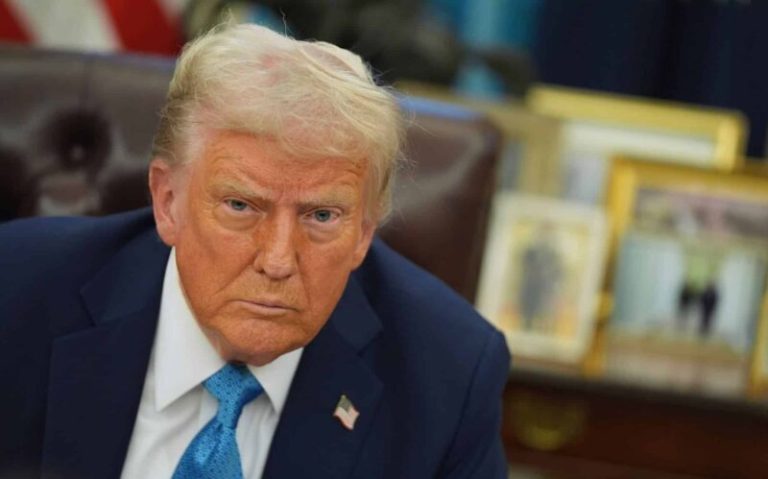Trump’s Trade Tariffs: A Desperate Gamble for Attention and Political Gain?
Former President Donald Trump, in a move seemingly designed to recapture the news cycle, has announced his intention to impose sweeping tariffs on imports from Canada, Mexico, and China. This declaration, delivered over the weekend, proposes a 25% duty on goods from Canada and Mexico, and a 10% duty on those from China. The move has sparked immediate controversy and raised concerns about the potential economic fallout, with critics labeling it a reckless political maneuver driven by Trump’s desire to project an image of strength rather than sound economic policy.
Trump’s justification for the tariffs centers on the issue of fentanyl trafficking into the United States. However, this rationale has been quickly challenged by experts, who point out inconsistencies and factual inaccuracies in the former president’s claims. While Trump attempts to link the fentanyl crisis to imports from these three countries, particularly highlighting the southern border with Mexico, data indicates a different picture. The contribution of fentanyl from Canada is negligible, and while a significant portion does originate in Mexico, the majority is brought in by American citizens, not by migrants as Trump suggests. This undermines the core argument for the tariffs, suggesting a disconnect between the stated reason and the actual motivation behind the policy.
The economic implications of these proposed tariffs are substantial and potentially damaging. Economists predict a rapid surge in inflation, further squeezing American consumers already grappling with rising prices. The tariffs would also likely force the Federal Reserve to postpone planned interest rate cuts, hindering efforts to stimulate economic growth. These consequences could ripple through various sectors of the American economy, impacting businesses, consumers, and the overall economic outlook. The tariffs threaten to disrupt established supply chains, increase the cost of everyday goods, and potentially trigger retaliatory measures from the targeted countries, further exacerbating the economic damage.
Trump’s response to the criticism and projected economic fallout has been to double down on his hostile rhetoric, continuing to blame Canada, Mexico, and migrants for the fentanyl crisis. This strategy of escalating aggressive language, rather than engaging in substantive debate or presenting evidence to support his claims, is a hallmark of Trump’s political style. It raises concerns that the tariffs are less about addressing the fentanyl issue and more about stoking nationalist sentiment and appealing to his base. By casting himself as a strong leader taking decisive action against perceived external threats, Trump aims to solidify his political standing and deflect attention from the potential economic harm his policies may cause.
Professor Scott Lucas, an expert in US foreign policy, has sharply criticized Trump’s tariff proposal, characterizing it as economically nonsensical and driven primarily by the former president’s desire to project an image of toughness. In appearances on various news outlets, including BBC, LBC, and GB News, Professor Lucas has dissected the flaws in Trump’s justification for the tariffs, highlighting the misleading claims about fentanyl trafficking and emphasizing the potential for significant economic damage. He argues that the tariffs are a politically motivated maneuver designed to boost Trump’s image rather than a genuine attempt to address the complex issue of drug trafficking or improve the economic well-being of American citizens.
The incident underscores the ongoing challenges posed by the spread of misinformation and the manipulation of complex issues for political gain. The use of emotionally charged rhetoric and unsubstantiated claims can easily distract from the real consequences of such policies. It also highlights the importance of critical analysis and fact-checking in the face of political pronouncements, particularly those with potentially far-reaching economic and social implications. The debate surrounding these tariffs is likely to continue, with ongoing analysis of the potential consequences and further scrutiny of Trump’s motivations. The ultimate impact of these proposed tariffs, both economically and politically, remains to be seen.


